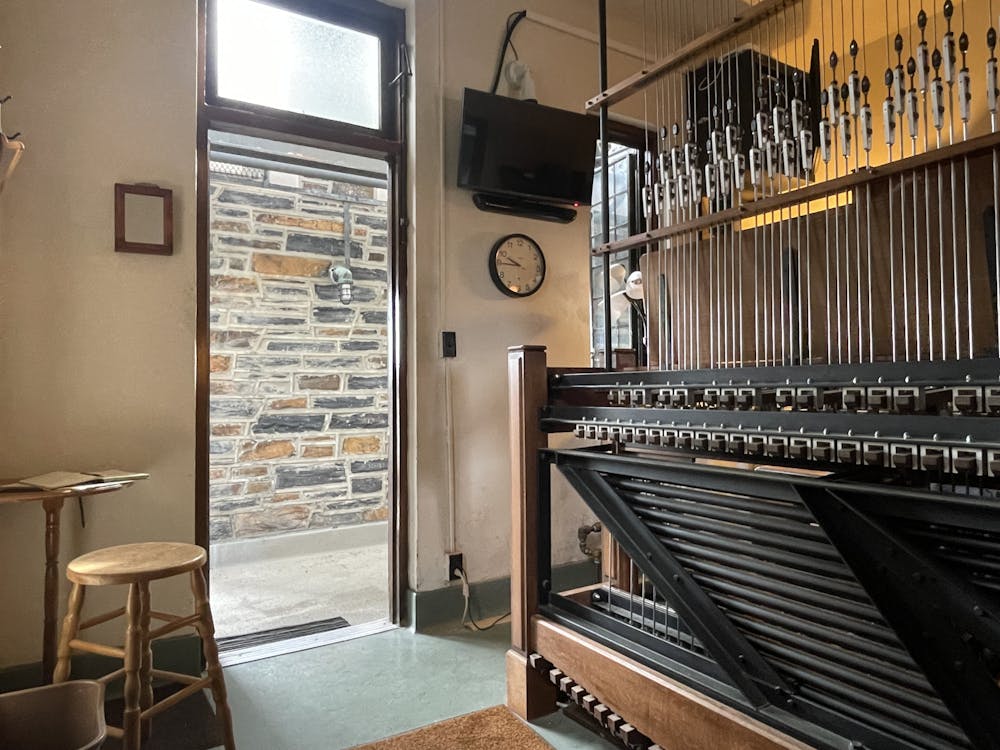Every day at 5 p.m., rich melodies roll over the lawns of West Campus, washing over the masses typing on laptops at tables in the Bryan Center plaza all the way to students tossing frisbees in the Duke Gardens.
The sound originates from three-quarters up the Chapel facade, where two long windows adorned with gothic ornamentation open into 50 bells ranging in size. The clapper in each bell is connected to a wooden bar in the carillon, an organ-like instrument, in the cozy cabin below.
In decades of tradition, the Chapel carillonneur accompanies the 5 p.m. bells with select musical pieces. This year, the two carillonneurs are Mitchell Eithun, a master's candidate at Duke Divinity School, and Aaron Colston, a postdoctoral associate in history.
***
Inside the Chapel, Colston changes into thin-soled shoes that provide maximum control while pressing the carillon’s pedals. Tying his shoelaces, he flashes blue masking tape around the second segment of each finger to protect his skin from the carillon’s wooden levers. Since the bars on the carillon are connected to the bells above, the bigger the bell, the harder the player has to push the bar.
Colston and I ascend a winding stone staircase that, as Ann Hall — the attendant at the Chapel’s visitor relations desk — warns me, is any claustrophobic person’s worst nightmare. Colston talks about the music he wants to play, from pieces by Clara Schumann to John Coltrane.
“I'd like to say I play more popular music, but I don't play too much of it,” Colston said. “I'm a jazz and classical guy.”
We stop at the balcony overlooking the bells, some as big as cars and others as small as classroom desks. Colston explains that one key difference between the carillon and any typical instrument is that the music does not come from the carillon itself but from the bells above. “Crystal” high notes can only be heard by those on Abele Quad, while “cavernous” low notes carry as far as the Gardens.
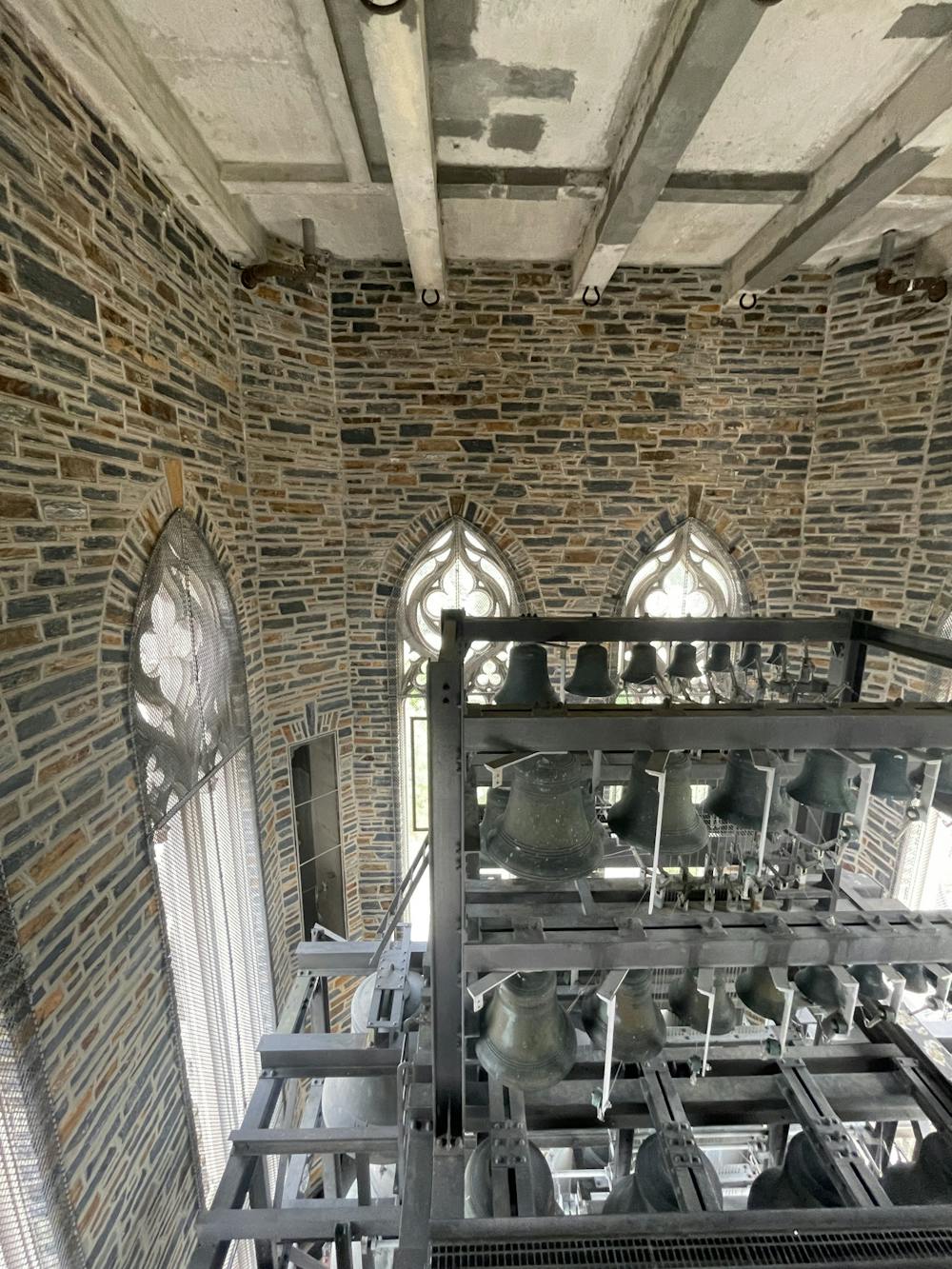
“You have to have a floating conception,” Colston said. “[You’ve] got to have a sense of the way those notes are happening in space.”
***
Installed in 1932, the Duke carillon was one of the first in the South. The bells attached to the carillon were cast in Loughborough, England and donated by George G. Allen and William R. Perkins, former chairman and vice chairman of The Duke Endowment, respectively.
According to Zebulon Highben, director of chapel music at the Duke Chapel, bells were historically used as gathering signals, dating back to medieval times.
“Those bells would be rung to summon the community together, not just for church, but for civic events or town gatherings,” Highben said.
During the COVID-19 pandemic, the bells remained operational because playing the carillon is a solo activity, unlike the many other music groups and classes that were shut down. Highben said the bells became a “sign of hope” for those working on campus during that difficult time. In 2020, Highben began streaming the daily concerts on Facebook to share the experience with Duke community members living off-campus.
The carillonneur typically plays any music they like, but on certain dates plays music associated with particular events. For example, patriotic songs accompany the Fourth of July, holiday music accompanies Christmas and Star Wars selections accompany May 4.
Music can also express solidarity with tragedies. After the shootings at the University of North Carolina at Chapel Hill and Michigan State University last year, the carillonneur played the universities’ alma maters and fight songs. Every Friday, though, “Dear Old Duke” sounds out across campus. The carillonneur records every song and the date they played it in a log book in the carillon cabin.
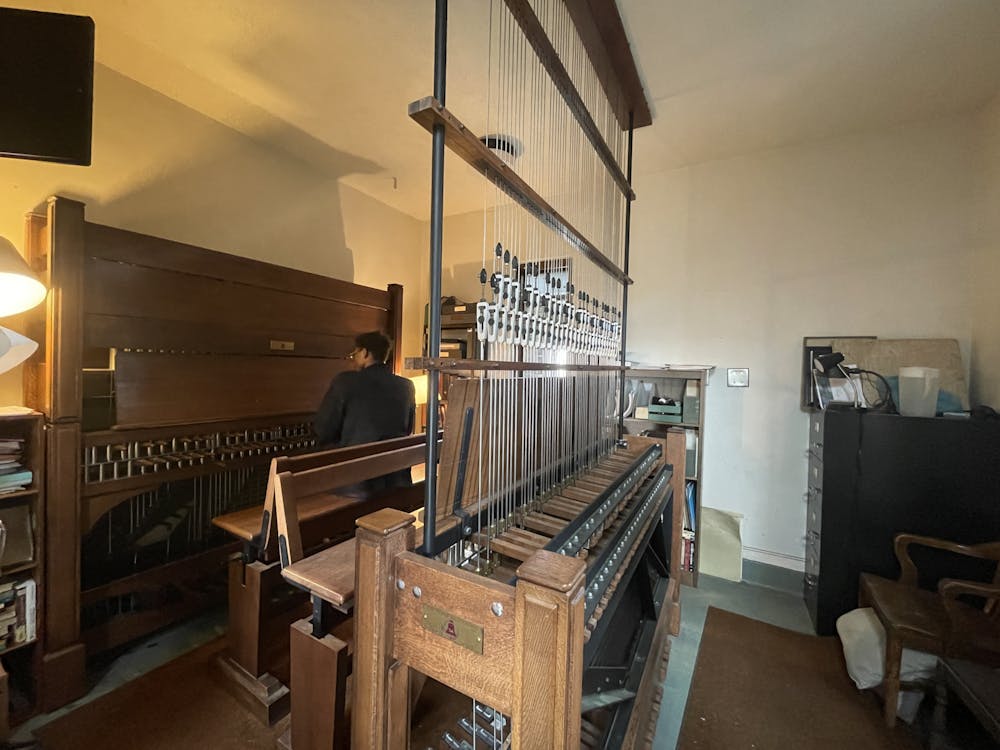
J. Samuel Hammond, a librarian who served as the University's carillonneur for 53 years, cemented these musical traditions. Hammond retired in 2018 and passed away in 2021.
Since then, one or two Duke staff or graduate students have taken over playing the Chapel carillon.
***
Descending back down the tower, Colston recounts his music-centered upbringing. He began playing the keyboard in high school, sometimes playing the organ in his church but only becoming acquainted with the carillon once he came to Duke.
As a graduate student, Colston worked in an office carrel next to Hammond’s. Colston knew that Hammond played the bells and offered to compose a piece for the carillon. Hammond critiqued Colston’s compositions and taught him about the instrument, noting the difference in sound compared to a piano and the difficulty of playing traditional keyboard-style arrangements since the carillon requires mechanical force.
Under the mentorship of Hammond and Paul Bumbalough, former associate dean of students and the other carillonneur at the time, Colston observed performances and practiced independently. Colston became a Chapel carillonneur last summer after Highben contacted him to fill an opening.
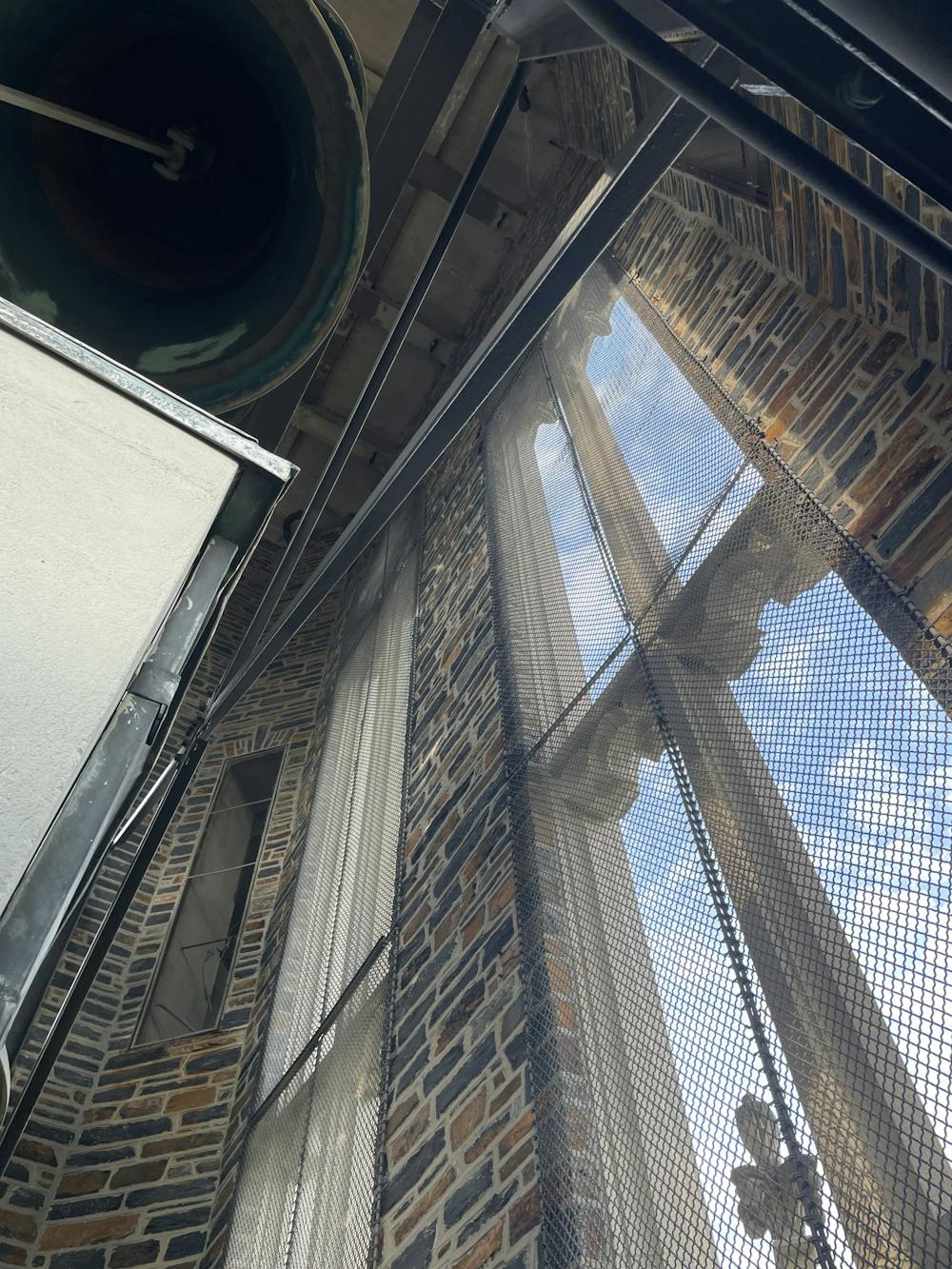
Emerging from the dimly lit staircase, we exit onto a floor bathed in sunlight, with doors that opened into the thin balcony surrounding the Chapel tower. In the middle was a small cabin that looked frozen in time, with its dusty photographs, loved wooden furniture and oak carillon in the center.
“I'll ring one, you ring three,” Colston said.
He plays a short melody followed by one of the 5 p.m. chimes. In what I hope was appropriate rhythmic timing, I push the lever down three times, and Colston finishes with the fifth ring.
Colston then begins to play a variation of the melody from the Emmy Award-winning television show “Succession.” He uses the sides of his fingers to hit the bars, humming and shifting along the bench when moving from high to low notes. When Colston finishes the piece, we listen to the last chimes echo across campus.
Already thinking about future performances, Colston noted that students can email him song requests, but they must be of “good music.” Of course, there is no objective standard for “good music,” he said. Colston admitted he didn’t think “Succession” would work at first.
Colston gathers his sheet music, paper-filled leather pouch and empty espresso cup and writes “Succession” in the log book on his way out of the office.
He locks the door to the carillon cabin, and we watch the sun sink over the Chapel roof before we descend the stone staircase to what feels like a different world below.
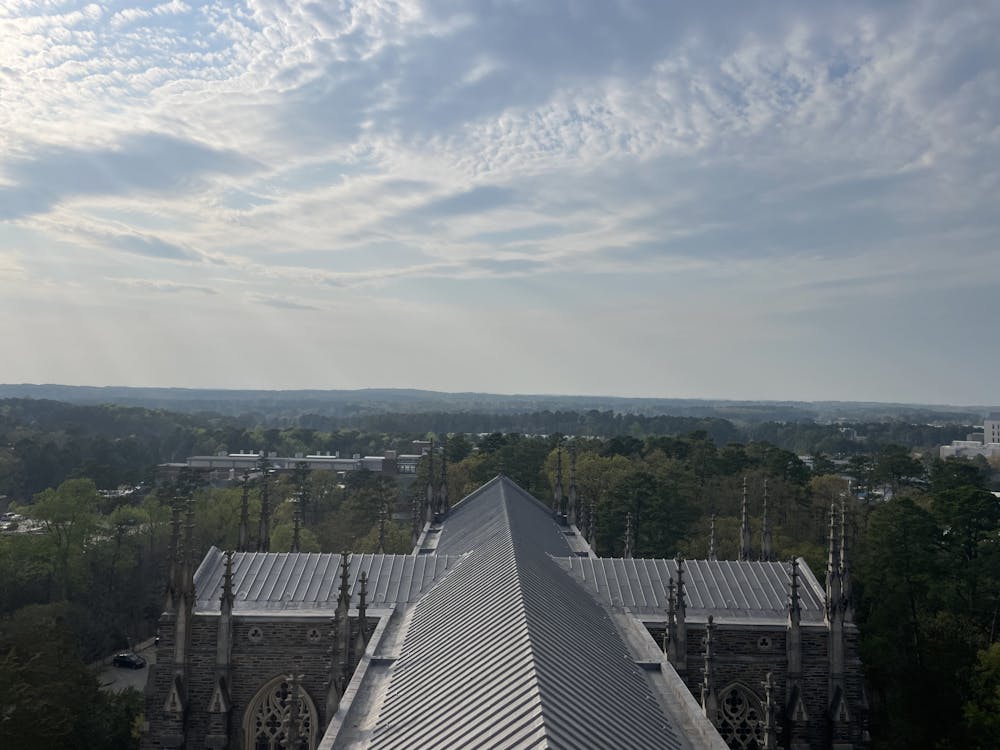
Get The Chronicle straight to your inbox
Signup for our weekly newsletter. Cancel at any time.

Zoe Spicer is a Trinity junior and a features managing editor of The Chronicle's 119th volume.

